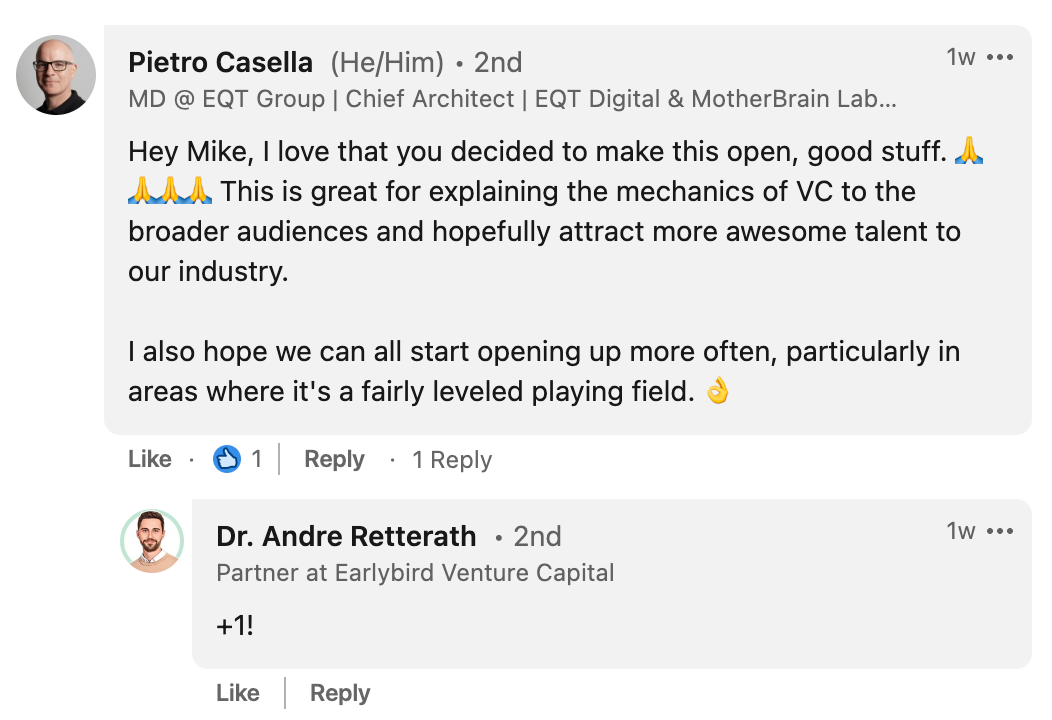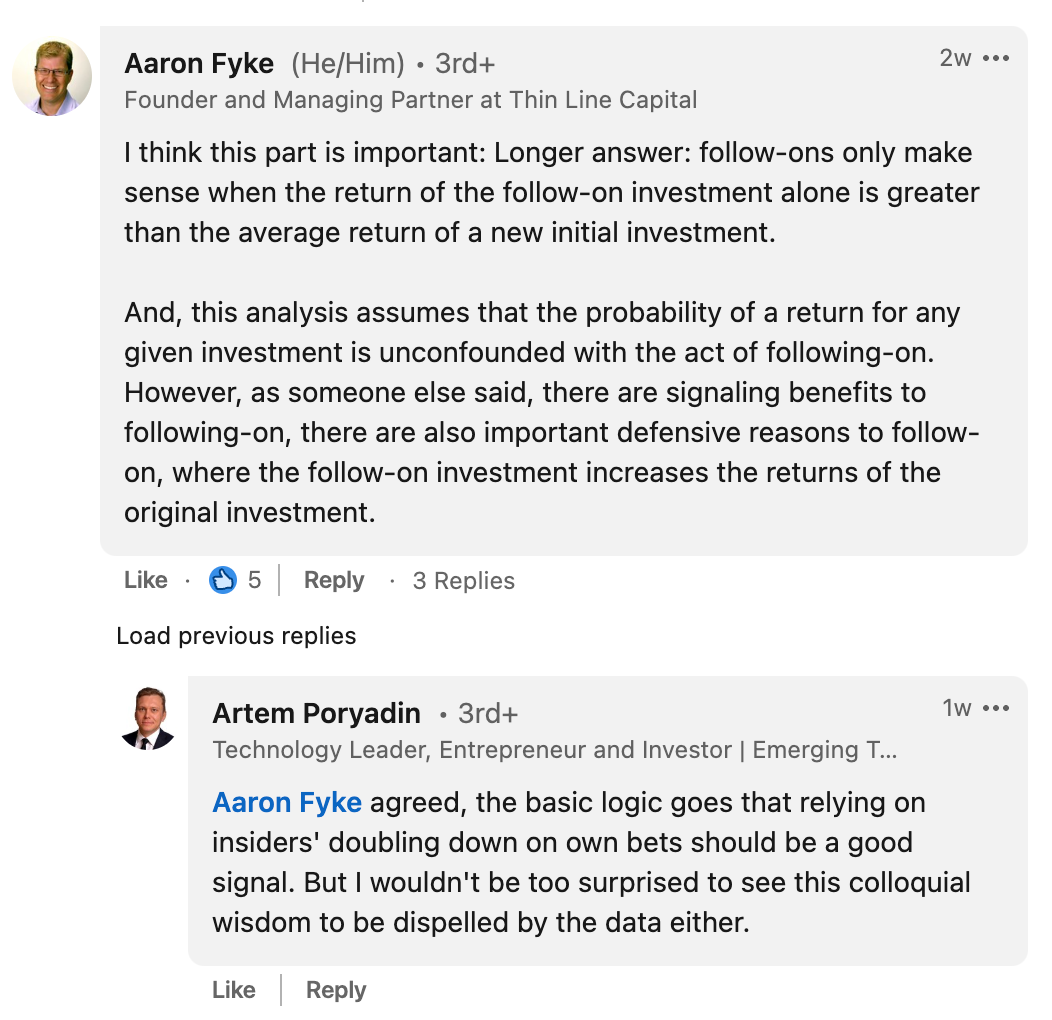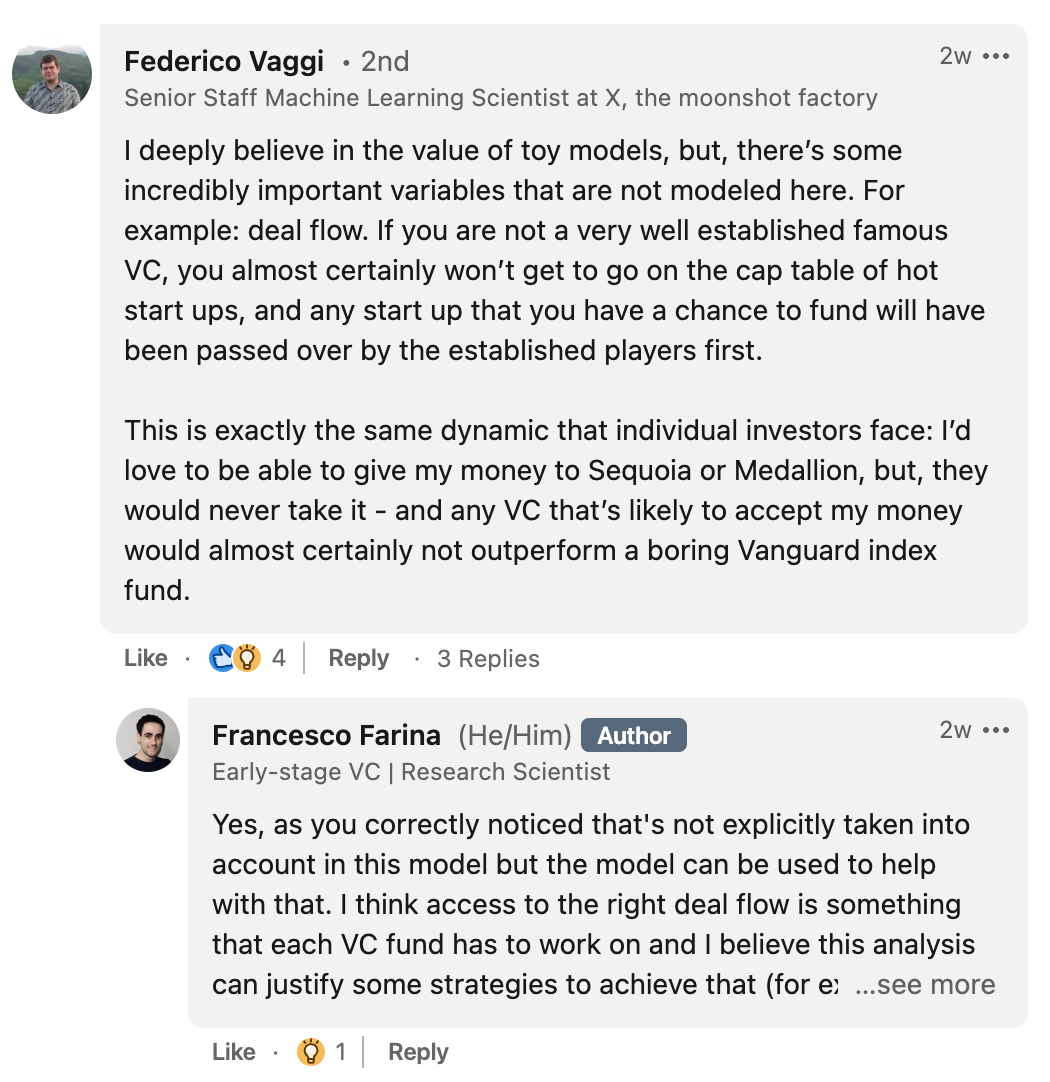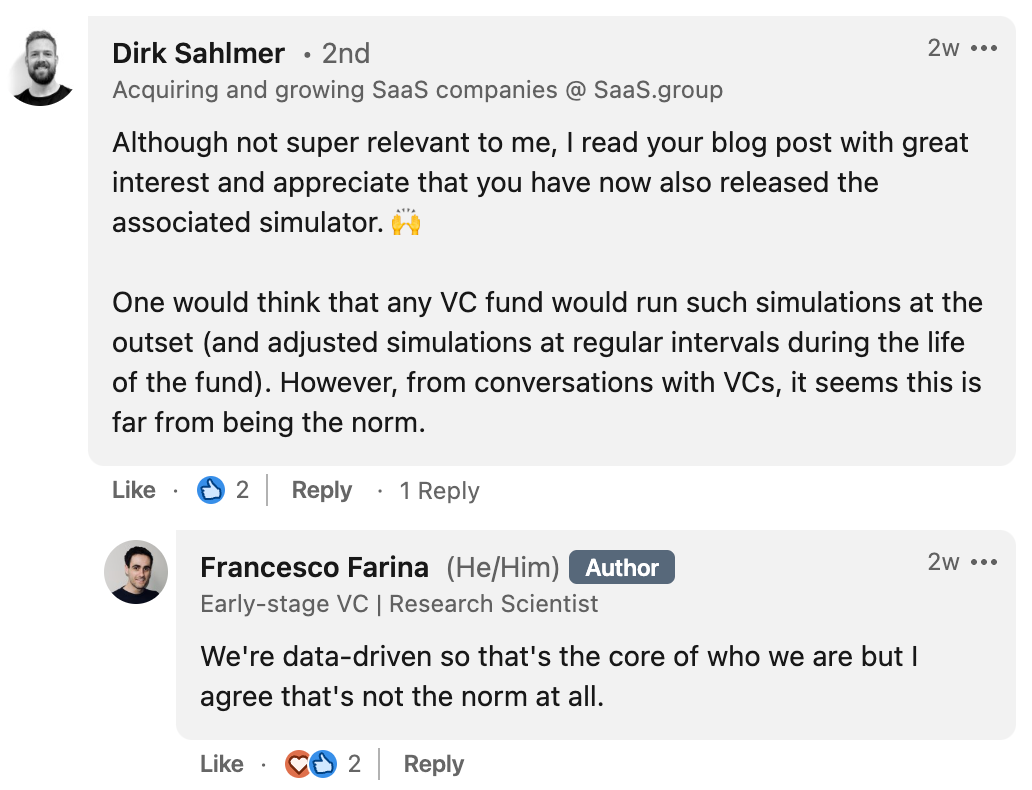Thoughts and discussions on venture portfolio construction
As a follow-up to releasing our Portfolio Simulator, we thought we'd dive into some of the most interesting discussions it generated.

A lot of VCs and LPs have a good gut feel for venture portfolio construction, but it’s often very anecdotal. We wanted to take a more first-principles approach to understanding the factors that affect portfolio construction strategy.
So over the last few months, Mike, Francesco, Jonas and Harpal have been analysing data and reasoning about the optimal early-stage venture portfolio construction strategy, running nearly a trillion simulations in the process. Our Portfolio Simulator is one of the results of that research.
- Try out our Portfolio Simulator here.
- Read the main takeaways from our research.
Opening up
This work builds on fertile ground. The likes of Correlation Ventures, Jerry Neumann, and AngelList have established that early-stage investment follows a power law distribution. And Steve Crossan – DeepMind and AlphaFold alumnus – has done some excellent work on the relationship between larger portfolios, reduced risk and increased returns in the case of unbounded ROI on investments.
Our research and simulator make a new contribution, adding some unique insights to the discussion.
While we initially built the simulator as an internal tool to help us design our own portfolios, we found it so useful that we were keen to release it for our peers and LPs as well.

And we’re glad we did. Judging from the feedback we got, other investors got a lot out of it and it provoked some interesting debate.
Follow-on debate
Perhaps the most controversial point was our finding that the mathematically optimal follow-on policy, from the fund’s perspective at least, is: don’t – unless, of course, the return of the follow-on investment alone is greater than the average return of a new initial investment.

This finding was borne out in other commenters’ experience and analysis. But it highlights the nuance required here, and the various “soft” factors at play, which were outside the scope of the model.
While following on on your investments might not be mathematically optimal, it is important for other reasons. From a founder’s perspective, follow-ons are vital, both as a vote of confidence and an extension of their runway. They also act as a positive signal to later investors, which could counterbalance the potentially sub-optimal deployment of that capital.
Impact of deal flow
The other surprising finding was just how important the upper bound of ROI turned out to be. It has a profound effect on how you should approach constructing your portfolio.
This factor can act as a proxy for your access to deal flow as an investor – if we assume that VCs have a good ability to predict which companies will be the most significant returners. If you’re in a position where your maximum possible return is low, say 20x, and you want to maximise the chance of more than 3x, you want to concentrate. In most other situations, you want a larger-than-average portfolio.

So while deal flow was not explicitly taken into account in our model, you can potentially tune the upper bound of ROI in the simulator to roughly imitate the effect. You could then start thinking about strategies to counteract sub-optimal deal flow by, for example, doing a lot of small tickets so you don’t have to compete over leading the round.
This is precisely what we wanted this research and simulator to do. Not to provide definitive answers, but to question some of the assumptions and received wisdom of our industry. We wanted to draw out the nuance of, and relationships between, the various factors that affect performance to help other investors – and founders – think about portfolio strategy in a more data-driven way.
What’s next?
Of course, there’s a lot more to explore. Being early-stage investors, that was our focus with the research. Later-stage venture and private equity is a different beast, following a completely different probability distribution, and with lower risk and lower upside. And if we change some of the core parameters of our simulation distribution, the results would be completely different, and we'd have to build a different model.
By adding a time horizon to the model, for instance, we could ask more nuanced questions about strategy; the optimal strategy for achieving 10x in two years is going to look very different to the strategy for achieving 10x in five years. Another day, perhaps.
As we said in our piece covering the key findings of the research, there is no one-size-fits-all strategy. You have to start with your objectives: what do you actually want to achieve with your fund?
That’s one of the reasons why we place so much emphasis on articulating our investment theses. Together with this sort of data-driven analysis and our technology-first deal flow, they enable us to make more focused, strategic investment decisions.
We hope you’ve found the research and the portfolio simulator helpful. We want to make VC more data-driven, and we're excited to continue conducting research and developing tools that help us all achieve that.


